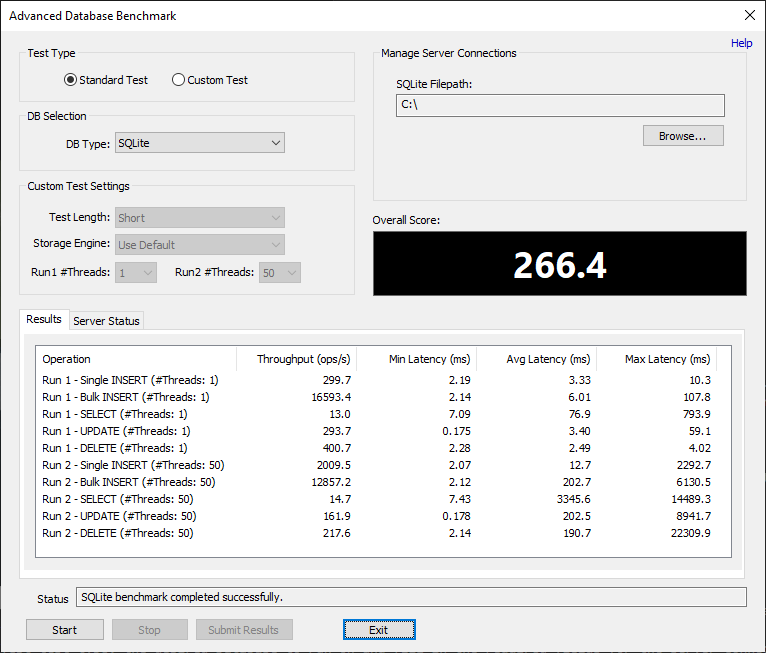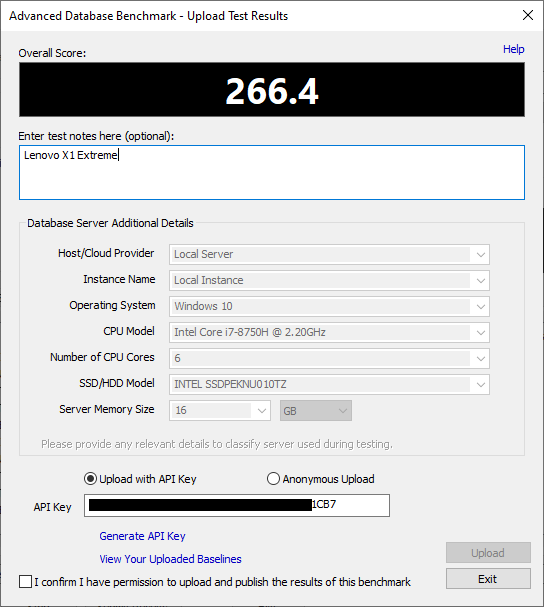PassMark PerformanceTest‘s Advanced Database Test offers users the ability to run standarized set of tests on popular databases. Allowing both the comparision of the relative performance of different software, different hardware and/or cloud platforms.
Jump to Section:
In the case of these Database Benchmark charts there are several factors to consider, such as
Good:
Limitations:
Database Rating:
Advanced Database Test measures the throughput and latency of the CRUD operations by performing two test runs, first a single-thread and the second run with multi-threaded (50 threads) test.
Database Rating is calculated from the throughput results of the two test runs using weighted scoring method with the percentages as follows:
Insert (Single):
The Single Insert test executes insertion one row in a single SQL statement. There are four database tables and it will insert 200 records into each table, in total 800 rows will be inserted using single insertion SQL query.
In multi-threaded test, the same total number of rows will be inserted, and it is done by dividing the tasks equally to each thread and inserting simultaneously into tables.
Insert (Bulk):
The Bulk Insert test inserts 100 rows in a single SQL statement.
Select:
Select is most common and important database operation and we have assigned a higher weight (13%) to Select than others.
We have designed six different Select query statement for an effective database testing, covering functions and operators like COUNT(), SUM(), GROUP BY, ORDER BY, JOIN, LIKE.
Update:
Update is also an important command commonly used in everyday database operations. A higher weight (12%) is assigned to this and there are two different queries executed for the Update test.
Delete:
The Delete test will delete 10,000 rows in total from a selected database table.



Your results (if qualified) will not appear in the graphs immediately as the graphs are only updated once per day. Additionally, some systems may be filtered out where there is suspicion of cheating or inappropriate results.